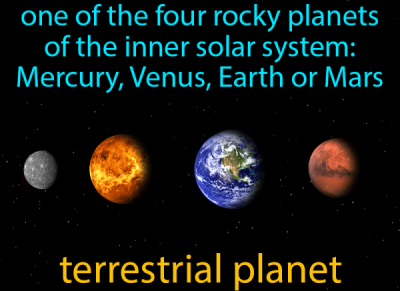
“Terra” is a Latin word meaning “earth” that found its way to the English dictionary in the 15th century. So in simple terms, a terrestrial planet is an Earth-like planet in size and composition!
In our solar system, the first four planets – Mercury, Venus, Earth and Mars – are called terrestrial, as they are dense and made up of mainly silicate (minerals containing silicon and oxygen) rocks and metals. The remaining four outer planets – Jupiter, Saturn, Uranus and Neptune – are called giant planets; the first two are gas giants and the last two are ice giants.
Mars, like all other terrestrial planets, has a core, a mantle and a crust. The metallic core is dense, consisting mainly of iron. The mantle, the layer above it, contains silicates. Millions of years ago, fierce volcanic activity covered the Martian crust with lava flows that solidified into iron-rich basaltic rock. As time went by, iron in the rock reacted with the atmosphere, became iron oxide, and gave Mars its characteristic reddish colour!
Though we are yet to see any eruptions on the planet, we don’t know for sure whether Mars’ ‘volcanic’ days are behind it or not! Its surface still has many volcanoes including the Olympus Mons, which is the largest volcano, and the highest mountain discovered till date in our solar system.
Picture Credit : Google




